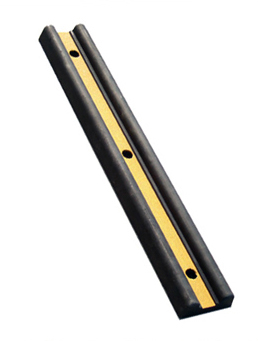Overview
Introduction to underground cables
Underground cables play a crucial role in providing electricity and telecommunications services. They are essential for powering homes, businesses, and infrastructure. However, these cables are vulnerable to various hazards, including accidental damage caused by construction activities or natural disasters. To ensure the longevity and reliability of underground cables, it is important to implement effective protection measures. This article will discuss the importance of protecting underground cables and highlight road safety measures as a key aspect of cable protection.
Importance of protecting underground cables
Protecting underground cables is of utmost importance for the smooth functioning of various infrastructures. Underground cables carry vital services such as electricity, telecommunications, and internet connectivity. These cables are vulnerable to damage from external factors such as construction activities, natural disasters, and even accidental digging. Without proper protection, the integrity of these cables can be compromised, leading to service disruptions, financial losses, and potential safety hazards. Therefore, implementing cable protectors is crucial to ensure the longevity and reliability of underground cables.
Common threats to underground cables
Underground cables face several common threats that can cause damage and disruption to their operation. One of the common threats is the presence of speed bumps in Jacksonville. Speed bumps are designed to slow down vehicles and ensure safety on the roads. However, they can pose a risk to underground cables if not properly installed or maintained. The constant pressure and vibrations caused by vehicles passing over speed bumps can lead to cable damage, resulting in power outages or communication failures. It is crucial to implement cable protectors in areas with speed bumps to prevent any potential damage. Cable protectors act as a barrier between the cables and the vehicles, absorbing the impact and reducing the risk of damage. By installing cable protectors, the integrity and longevity of underground cables can be ensured, minimizing the need for costly repairs and service interruptions.
Types of Cable Protectors
Cable protectors for outdoor applications
Cable protectors for outdoor applications play a crucial role in safeguarding underground cables from potential damage. These protective devices are designed to provide a barrier between the cables and external factors such as heavy machinery, vehicles, and harsh weather conditions. Step by step guide on how to install cable protectors can help ensure a seamless and effective installation process. By following these guidelines, users can minimize the risk of cable damage and extend the lifespan of their underground cables. With their durable construction and easy installation, cable protectors are an essential component for any outdoor cable management system.
Cable protectors for indoor applications
Cable protectors for indoor applications play a crucial role in ensuring the safety of underground cables. These protectors are designed to safeguard cables from potential damage caused by heavy foot traffic or equipment movement. By providing a physical barrier, cable protectors prevent accidental tripping or cable dislodgement, reducing the risk of injuries and cable disruptions. Additionally, cable protectors can also improve the organization and aesthetics of indoor spaces by neatly concealing cables. When it comes to traffic safety solutions, cable protectors are an essential component for maintaining a safe and efficient environment.
Specialized cable protectors for high-risk areas
Specialized cable protectors for high-risk areas are essential to ensure the safety and longevity of underground cables. These protectors are specifically designed to withstand harsh environmental conditions and prevent damage caused by external factors. One such type of cable protector is the wire guard, which provides an extra layer of protection against accidental impacts and abrasions. Wire guards are made from durable materials and are often used in areas where there is a high risk of cable damage, such as construction sites and industrial facilities. By installing wire guards, the risk of cable failure and the subsequent disruption of services can be significantly reduced. Additionally, wire guards can also help in preventing unauthorized access to cables, ensuring the security and integrity of the underground infrastructure. Overall, specialized cable protectors, like the wire guard, play a crucial role in safeguarding underground cables and maintaining uninterrupted connectivity.
Installation of Cable Protectors
Preparation and planning
Preparation and planning are crucial when it comes to protecting underground cables with cable protectors. One of the key factors in ensuring the effectiveness of cable protectors is to slow down the excavation process. By taking the time to carefully plan and execute the excavation, the risk of damaging the underground cables is significantly reduced. In the city of Seattle, where underground cables are abundant, it is especially important to prioritize safety and take extra precautions. By implementing cable protectors and following proper procedures, the city can mitigate the risk of cable damage and ensure a reliable and uninterrupted power supply.
Choosing the right cable protector
When it comes to protecting underground cables, choosing the right cable protector is crucial. The cable protector acts as a barrier between the cables and potential damage, such as heavy machinery or environmental factors. There are several factors to consider when selecting a cable protector, including the material, size, and installation method. The material of the cable protector should be durable and resistant to various elements, such as moisture, chemicals, and UV rays. Additionally, the size of the cable protector should match the diameter of the cables to ensure a secure fit. Lastly, the installation method should be easy and efficient, allowing for quick and hassle-free installation. By choosing the right cable protector, you can ensure the longevity and reliability of your underground cables.
Proper installation techniques
Proper installation techniques are crucial for protecting underground cables. By following these techniques, the risk of damage to the cables can be significantly reduced. One important aspect of proper installation is ensuring that the cable protectors are correctly installed. Cable protectors act as a barrier between the cables and external elements, such as moisture and physical damage. It is important to choose the right type of cable protector based on the specific requirements of the underground cables. Additionally, proper cable routing and securing techniques should be employed to prevent any strain or tension on the cables. Regular inspections and maintenance of the cable protectors are also essential to ensure their effectiveness in protecting the underground cables. By implementing these proper installation techniques, the lifespan of the underground cables can be extended, reducing the need for frequent repairs and replacements.
Maintenance and Inspection
Regular cleaning and inspection
Regular cleaning and inspection play a crucial role in maintaining the integrity and functionality of underground cables. By regularly cleaning the cables and inspecting them for any signs of damage or wear, potential issues can be identified and addressed before they escalate into major problems. Understanding traffic calming is essential in this process, as it helps to minimize disruptions and ensure the safety of the cables during maintenance activities. Regular cleaning and inspection should be conducted by trained professionals who have the expertise to identify and rectify any potential issues. By following a proactive approach to cable maintenance, the lifespan of underground cables can be significantly extended, resulting in improved reliability and reduced downtime.
Repairing damaged cable protectors
When it comes to repairing damaged cable protectors, it is crucial to act quickly and efficiently. Damaged cable protectors can leave underground cables vulnerable to various hazards, such as moisture, corrosion, and physical damage. To ensure the longevity and functionality of underground cables, it is essential to promptly identify and repair any damaged cable protectors. This can be done by conducting regular inspections and assessments of the cable protection system. Additionally, it is important to use high-quality materials and techniques for repairing damaged cable protectors to ensure their effectiveness. By taking proactive measures to repair damaged cable protectors, the overall reliability and safety of underground cables can be significantly improved.
Upgrading cable protectors as needed
Upgrading cable protectors as needed is crucial to ensure the longevity and reliability of underground cables. As technology advances and environmental conditions change, it is important to stay up-to-date with the latest cable protector designs and features. One of the key differences in cable protectors is their ability to withstand different levels of pressure and impact. Some cable protectors are specifically designed for heavy-duty applications, while others are more suitable for lighter usage. By upgrading cable protectors as needed, organizations can ensure that their underground cables are effectively protected against potential damage and disruptions. This proactive approach helps to minimize downtime and repair costs, ultimately improving the overall performance of the cable infrastructure.
Case Studies
Successful implementation of cable protectors
Successful implementation of cable protectors is crucial for the safety and longevity of underground cables. One of the key factors in ensuring the successful implementation of cable protectors is the installation of speed humps. Speed humps play a vital role in controlling the speed of vehicles and reducing the risk of accidental damage to the cables. These specially designed humps are strategically placed along the route of the underground cables to slow down vehicles and prevent them from driving over the cables at high speeds. By incorporating speed humps into the installation process, cable protectors can effectively safeguard the cables and minimize the potential for costly repairs or disruptions. The use of speed humps as part of cable protector implementation is a proactive measure that enhances the overall reliability and durability of underground cable systems.
Lessons learned from cable protection failures
Lessons learned from cable protection failures include the importance of maintaining underground cables. Regular maintenance is crucial in ensuring the longevity and reliability of these cables. Neglecting maintenance can lead to cable failures and disruptions in service. By regularly inspecting and repairing cable protectors, potential issues can be identified and addressed before they escalate. Additionally, proper installation techniques and adherence to industry standards are essential for effective cable protection. It is also important to consider environmental factors such as soil conditions and temperature fluctuations, as these can impact the performance of cable protectors. By learning from past failures, we can take proactive measures to protect underground cables and ensure uninterrupted service.
Cost savings from using cable protectors
Cost savings from using cable protectors can be significant. By installing cable protectors, the risk of accidents and damage to underground cables is greatly reduced. This can result in reduced repair and replacement costs, as well as minimizing downtime due to cable failures. Additionally, using cable protectors can also help to prevent disruptions to essential services such as electricity, telecommunications, and internet connectivity. Overall, the investment in cable protectors can lead to long-term cost savings and improved reliability of underground cable systems.
Conclusion
Importance of proactive cable protection
Protecting underground cables is crucial for ensuring the uninterrupted supply of electricity and other essential services. The importance of proactive cable protection cannot be overstated. By implementing effective cable protectors, we can prevent damage caused by external factors such as excavation work, construction activities, and natural disasters. Proactive cable protection also helps in reducing the risk of costly repairs and downtime. It ensures the safety of both the cables and the people who rely on them. Therefore, investing in cable protectors is a wise decision that guarantees the longevity and reliability of underground cables.
Future trends in cable protection
Future trends in cable protection involve the development of advanced technologies and innovative solutions to ensure the long-term durability and reliability of underground cables. One of the key areas of focus is the improvement of cable protector materials, with a particular emphasis on enhancing their resistance to environmental factors such as moisture, heat, and corrosion. Another important trend is the integration of smart monitoring systems into cable protection systems, allowing for real-time monitoring of cable conditions and early detection of potential issues. Additionally, there is a growing interest in the use of sustainable and eco-friendly materials for cable protectors, in line with the global push for more environmentally conscious practices. Overall, the future of cable protection is characterized by continuous advancements aimed at maximizing the lifespan and performance of underground cables.
Final thoughts on protecting underground cables
In conclusion, protecting underground cables is crucial for maintaining a reliable and safe electrical infrastructure. Cable protectors play a vital role in preventing damage to these cables from external factors such as excavation activities, vehicle traffic, and environmental conditions. By installing cable protectors, we can ensure the longevity of underground cables and minimize the risk of power outages and costly repairs. It is essential for utility companies and construction projects to prioritize the use of cable protectors and adhere to proper installation guidelines. By doing so, we can protect our underground cables and ensure uninterrupted power supply to homes, businesses, and other essential facilities.




